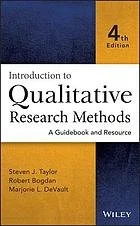
Research Methods
Introduction
When you begin a research project, one of the first questions you will face is: How should I approach my study? This is where research methodology comes in.
A research methodology is the overall strategy or framework that guides how you collect, analyze, and interpret data. It provides the “why” and “how” behind your choice of research methods. For example, deciding to use surveys, interviews, or case studies are methods—but the reasoning behind those choices is your methodology.
Understanding research methodologies is important because:
They ensure your study is structured, logical, and credible.
They help you select the best tools to answer your research question.
They provide transparency, so others can understand and replicate your work.
It’s also important to distinguish between methodology and methods:
Methodology = the overall research design or approach (e.g., qualitative, quantitative, action research).
Methods = the specific techniques you use to gather and analyze data (e.g., surveys, interviews, participant observation).
Different disciplines may emphasize certain methodologies more than others, and your choice will depend on your research goals, the type of data you need, and any ethical considerations. This guide introduces common research methodologies, highlights their strengths and limitations, and points you to resources for deeper exploration.
Qualitative vs Quantitative Research
Action Research
When starting a research project, it’s important to understand the differences between qualitative and quantitative research, because each approach serves different purposes and answers different types of questions.
Qualitative research explores meaning, experiences, and context, asking questions like “why” or “how”. It emphasizes depth and richness, using descriptive data such as interviews, focus groups, and observations.
Quantitative research, on the other hand, focuses on numbers, measurement, and patterns. It often seeks to answer “how many”, “how often”, or “what is the relationship between variables”, using surveys, experiments, or structured observations.
Choosing the right approach depends on your research question, available data, and goals. Sometimes, researchers combine both approaches in mixed methods research to get a fuller picture.
Relevant Reading
Quantitative vs. Qualitative Research: The Differences Explained | Scribbr
| Feature | Qualitative Research | Quantitative Research |
|---|---|---|
| Focus | Understanding meaning, experiences, and context | Measuring patterns, relationships, or trends |
| Data Type | Words, images, observations, narratives | Numbers, statistics, measurable variables |
| Purpose | Explore, describe, interpret | Test hypotheses, quantify, generalize |
| Methods | Interviews, focus groups, case studies, ethnography, participant observation, life histories | Surveys, experiments, structured observations, secondary data analysis |
| Strengths | Rich, detailed insights; captures context | Measurable and often generalizable; reveals patterns and correlations |
| Limitations | Less generalizable; can be time-consuming; may introduce researcher bias | May overlook context or meaning; requires rigorous design; large samples often needed |
| Typical Questions | Why do people behave this way? How do participants experience this phenomenon? | How many people exhibit this behavior? Is there a relationship between X and Y? |
A Quick Look at Qualitative vs Quantitative
Quantitative Research
What is Quantitative Research?
Quantitative research focuses on exploring and understanding people’s experiences, perspectives, and social contexts. Instead of using numbers and statistics, it collects descriptive data such as words, images, or observations. Researchers often ask “why” and “how” questions to gain deeper insight into behaviors, beliefs, or cultural practices.
Helpful Professor Explains! : Quantitative Research: Definition, Pros & Cons (In 4 Minutes!)
Key Features
Uses numbers, statistics, and structured data.
Often involves hypothesis testing to confirm or reject assumptions.
Data is usually collected using standardized instruments (e.g., surveys, tests, experiments).
Emphasizes objectivity and replicability.
Common Approaches in Quantitative Research
Experiments – Manipulating one or more variables to observe their effect on an outcome.
Surveys/Questionnaires – Collecting data from a large group using structured questions.
Structured Observations – Recording observable behaviors according to predefined criteria.
Secondary Data Analysis – Using existing numerical datasets (e.g., census data, health statistics) for analysis.
Strengths
Provides measurable, often generalizable results.
Can reveal patterns, correlations, and causal relationships.
Data analysis is often faster with large datasets, especially using statistical software.
Limitations
May overlook the context or meaning behind the numbers.
Often requires large sample sizes for reliable results.
Design must be rigorous to avoid bias or invalid conclusions.
Examples of Research Questions
What is the correlation between study habits and exam scores among college students?
How does a new teaching method affect standardized test performance?
What percentage of employees report feeling satisfied with their workplace environment?
Relevant Reading
Qualitative Research
What is Qualitative Research?
Qualitative research focuses on exploring and understanding people’s experiences, perspectives, and social contexts. Instead of using numbers and statistics, it collects descriptive data such as words, images, or observations. Researchers often ask “why” and “how” questions to gain deeper insight into behaviors, beliefs, or cultural practices.
Helpful Professor Explains! : What is Qualitative Data? (Easiest Explanation)
Key Features
Works with non-numerical data (e.g., interview transcripts, field notes, videos, artifacts).
Aims for depth over breadth—understanding experiences in detail rather than generalizing widely.
Often interpretive, meaning the researcher plays an active role in making sense of the data.
Flexible and adaptive—methods can shift as new insights emerge.
Common Approaches in Qualitative Research
Action Research – A systematic approach where practitioners identify a problem, implement interventions, and evaluate the results to improve practices or outcomes.
Case Studies – In-depth examination of a single case (an individual, group, organization, or event).
Ethnography – Immersive study of cultures or communities through long-term observation and participation.
Focus Groups – Guided group discussions used to explore shared experiences or opinions.
Life Histories – Collecting detailed personal narratives across an individual’s lifetime.
Participant Observation – The researcher takes part in the activities of a group while observing behaviors and interactions.
Strengths
Provides rich, detailed insights into complex human experiences.
Captures context, meaning, and social dynamics.
Flexible design allows exploration of unexpected findings.
Limitations
Findings are often specific to a small group and may not be generalizable.
Interpretation may introduce researcher bias.
Data collection and analysis can be time-intensive.
Examples of Research Questions
How do students experience online learning communities?
What role does cultural identity play in workplace collaboration?
How do patients describe their recovery journey after surgery?
Qualitative Research Examples
Qualitative research methods are designed to help researchers understand human experiences, social interactions, and cultural contexts in depth. Unlike quantitative approaches, which focus on numbers and statistical analysis, qualitative methods gather rich, descriptive data such as personal narratives, observations, and group discussions.
The methods highlighted in this section:
While this list is not exhaustive, these are some of the most commonly used approaches for exploring complex questions about behavior, culture, and lived experiences. Each method offers unique strengths and insights, depending on the research context and the type of questions being asked.
By learning the distinctions between these methods, students can choose the approach that best fits their research goals and develop skills to collect, analyze, and interpret qualitative data effectively.
Action research is a practical, problem-solving approach where the researcher works within a community, organization, or classroom to improve practices, processes, or outcomes. Unlike traditional research, which often focuses on theory or generalized knowledge, action research is applied and cyclical, aiming for immediate positive change.
Helpful Professor Explains! - Action Research: Definition & Examples
Key Features
Conducted by practitioners (teachers, librarians, social workers, etc.) who are directly involved in the context.
Cyclical process: plan → act → observe → reflect → revise.
Collaborative in nature—often involves participants in the research process.
Focuses on real-world problems rather than purely theoretical questions.
Steps in Action Research
Identify the Problem – Determine a specific issue or area for improvement.
Plan – Develop an intervention or strategy to address the problem.
Act – Implement the plan in the real-world setting.
Observe – Collect data on the outcomes and effects of the intervention.
Reflect – Analyze results, evaluate what worked or didn’t, and revise the plan for the next cycle.
Strengths
Directly addresses practical problems and creates actionable solutions.
Involves participants, promoting engagement and ownership.
Encourages reflective practice and continuous improvement.
Limitations
Results are often context-specific and may not generalize widely.
Requires time and commitment to multiple cycles for meaningful change.
Researcher involvement can introduce bias.
Examples of Research Questions
How can a new classroom management strategy improve student engagement?
What changes in library instruction increase student use of online databases?
How can a community program be adapted to better meet participant needs?
Systematic Review
What is a Systematic Review?
Systematic research is a highly structured approach to investigating a specific research question. It follows a clear and transparent process designed to minimize bias and ensure that findings are reproducible. Typically, systematic research involves identifying all relevant studies on a topic, assessing their quality, and synthesizing results in a way that provides comprehensive insights.
ShikkhaPath - Case Study Research: Types and Example
Key Features
Focuses on depth over breadth.
Can be descriptive, exploratory, or explanatory.
Often uses multiple data sources (interviews, documents, observations).
Strengths
Provides rich, detailed insights.
Useful for understanding complex, context-dependent issues.
Limitations
Findings are usually not generalizable.
Can be time-consuming and require careful documentation.
Examples of Research Questions
How does a particular nonprofit develop volunteer engagement strategies?
What factors contribute to the success of a single classroom innovation?
Case Studies
What is a Case study?
A case study is an in-depth examination of a single subject, group, organization, or event. Researchers explore the subject in its real-life context to understand complex phenomena, uncover patterns, or generate insight
Basic quantitative research methods for urban planners
Reid Ewing, Keunhyun Park
A Quick Guide to Quantitative Research in the Social Sciences
Christine Davies, Carmarthen, Wales
Quantitative research methods : from theory to publication
Nicholas Harkiolakis
Relevant Reading
Qualitative research & evaluation methods : integrating theory and practice
Michael Quinn Patton
The SAGE handbook of applied social research methods
Leonard Bickman & Debra J. Rog
Qualitative research : a field manual for ministry students
Timothy D Lincoln
ShikkhaPath - Ethnography Research | Ethnography Research: Types Explained With Examples | Qualitative Research
Key Features
Involves long-term observation and sometimes participation in the daily life of a group.
Seeks to capture the insider’s perspective (the emic view) while also providing an outsider’s interpretation (the etic view).
Produces rich, detailed descriptions (called “thick description”) that go beyond surface-level observation.
Types of Ethnography
Realist Ethnography – Provides an objective, third-person account of a culture or group, often written in a scientific tone.
Critical Ethnography – Explores issues of power, inequality, and social justice, highlighting marginalized voices.
Autoethnography – Combines personal reflection with cultural analysis, where the researcher uses their own experience as data.
Virtual/Digital Ethnography – Focuses on online communities and digital spaces, observing how culture and identity are shaped in virtual environments.
Case Study Ethnography – Applies ethnographic methods to a specific bounded group or setting, such as a school, workplace, or organization.
When to Use
Ethnography is ideal when you want to:
Understand cultural norms and values within a community.
Explore how people make meaning of their experiences.
Study social behaviors in natural, real-world contexts.
Strengths
Provides deep, contextual insights into human behavior.
Captures unspoken norms and practices that surveys/interviews might miss.
Flexible method that allows for emerging discoveries during research.
Limitations
Time-intensive (may require months or years of observation).
Researcher’s bias and subjectivity can influence interpretation.
Difficult to generalize findings beyond the studied group.
Potential ethical concerns with consent and observation.
Example Research Questions
How do new teachers adapt to the cultural norms of a school community?
What social rituals and interactions define belonging in an online gaming community?
How does workplace culture influence collaboration in nonprofit organizations?
In what ways do immigrant communities maintain and adapt their cultural traditions in a new country?
Ethnography
What is Ethnography?
Ethnography is a qualitative research method that focuses on studying people within their natural environments to understand their behaviors, cultural practices, and social interactions. It is often used in anthropology, sociology, education, and communication studies, but it can also be valuable in organizational and community research.
Helpful Professor Explains! - What is a Focus Group? (Easiest Explanation)
Typically 6–12 participants per session.
Data is qualitative and recorded for analysis.
Strengths
Generates rich insights quickly.
Reveals consensus, disagreement, and group dynamics.
Limitations
Group dynamics may influence individual responses.
Requires skilled facilitation to avoid bias.
Examples of Research Questions
What do students think about library online tutorials?
How do community members perceive a new public program?
Focus Groups
What is a Focus Group
Focus groups involve guided discussions with a small group of participants to explore perceptions, opinions, or experiences. A facilitator leads the conversation based on specific topics or questions.
Key Features
Encourages group interaction and idea exchange.
Key Features
Integration of Data: Collects and analyzes both numerical and narrative data.
Sequential or Concurrent Designs: Data may be gathered in stages (sequential) or at the same time (concurrent).
Triangulation: Using multiple sources of evidence to strengthen findings and improve validity.
Flexibility: Allows the researcher to adapt methods depending on the research question.
Common Mixed Methods Designs
Convergent Parallel Design – Collects quantitative and qualitative data simultaneously, then compares and integrates results.
Explanatory Sequential Design – Begins with quantitative data, followed by qualitative data to help explain patterns or anomalies.
Exploratory Sequential Design – Starts with qualitative data to explore an issue, followed by quantitative research to test or expand findings.
Embedded Design – One methodology (qualitative or quantitative) is embedded within the other as a supportive component.
Strengths
Provides both breadth (quantitative) and depth (qualitative) of understanding.
Helps validate findings through triangulation.
Explores unexpected results in greater detail.
Flexible and adaptable for complex research problems.
Limitations
Time-consuming and resource intensive.
Requires expertise in both qualitative and quantitative methods.
Data integration can be challenging.
More complex to design and explain compared to single-method studies.
Example Research Questions
How does student engagement (measured through surveys) relate to their lived experiences of online learning?
What impact does a new teaching method have on test scores, and how do students describe their learning experiences under this approach?
In what ways do community health initiatives change health outcomes, and how do participants describe their personal experiences of those changes?
Quantitative vs Qualitative vs Mixed Methods
| Feature | Quantitative | Qualitative | Mixed Methods |
|---|---|---|---|
| Data Type | Numerical, statistical | Descriptive, narrative | Both numerical & narrative |
| Focus | Measuring variables; testing hypotheses | Exploring meanings, experiences, contexts | Integrating measurement with exploration |
| Strength | Breadth; generalizability | Depth; contextual understanding | Comprehensive view (breadth + depth) |
| Design Examples | Experiments, surveys, correlational studies | Interviews, ethnography, case studies | Convergent, sequential, embedded |
| Limitations | May miss context/meaning | May lack generalizability | Resource-intensive; complex design |
| Sample Question | What percentage of students complete online courses? | How do students describe their experiences in online courses? | What percentage complete, and how do students describe the factors influencing completion? |
Key Features:
Follows a pre-defined protocol and methodology
Requires clear inclusion and exclusion criteria for sources
Involves extensive database searching to capture as much relevant literature as possible
Aims to minimize researcher bias through transparency and repeatability
Strengths:
Produces reliable, replicable findings
Provides a comprehensive overview of available evidence
Helps identify research gaps
Limitations:
Time- and labor-intensive
Requires advanced knowledge of research methods and database searching
May become outdated quickly in fast-evolving fields
Example Research Question:
What is the effectiveness of mindfulness-based interventions in reducing workplace stress among healthcare professionals?
Key Features:
Informed by the most reliable and up-to-date evidence
Often involves systematic reviews and meta-analyses as key sources
Balances research evidence with real-world context and expertise
Used to guide practice, policy, and decision-making
Strengths:
Promotes effective, efficient, and ethical decision-making
Reduces reliance on outdated or biased practices
Bridges the gap between research and practice
Limitations:
Quality of decisions depends on the availability and quality of evidence
May not account for unique contextual or cultural factors
Can be resource-heavy in terms of time and access to high-quality studies
Example Research Question:
What teaching strategies, supported by current evidence, are most effective for improving literacy outcomes in early childhood education?
Comparison of Systematic and Evidence-Based Research
| Feature | Systematic Research | Evidence-Based Research |
|---|---|---|
| Definition | A structured approach to reviewing and synthesizing all relevant studies on a topic using a transparent, repeatable process. | An approach to practice and decision-making that integrates the best available research evidence with professional expertise and stakeholder needs. |
| Primary Goal | Provide a comprehensive, unbiased summary of existing evidence for a specific question. | Guide real-world practice and policy using the most reliable and applicable evidence. |
| Key Features | Pre-defined protocol; inclusion/exclusion criteria; extensive literature searching; reproducible methods. | Draws on systematic reviews/meta-analyses; balances evidence with context, expertise, and values. |
| Strengths | Comprehensive; minimizes bias; identifies research gaps; reproducible. | Improves practice; promotes effective decision-making; bridges research and application. |
| Limitations | Time- and labor-intensive; requires advanced skills; can become outdated quickly. | Depends on evidence quality/availability; may not address unique contexts; resource-heavy. |
| Example Question | What is the effectiveness of mindfulness-based interventions in reducing workplace stress among healthcare professionals? | Which teaching strategies, supported by current evidence, most effectively improve early childhood literacy outcomes? |
Choosing a Methodology
Selecting the right research methodology is one of the most important steps in planning a study. Your choice affects how you collect data, analyze results, and ultimately draw conclusions. The best methodology aligns with your research question, objectives, available resources, and the type of data you need.
Key Considerations
Research Question and Goals
Identify whether your question is exploratory, descriptive, explanatory, or evaluative.
Quantitative methods are generally suited for questions that require measurement, comparison, or hypothesis testing.
Qualitative methods are ideal for exploring experiences, meanings, and social contexts.
Mixed methods can be used when you want to combine numerical analysis with rich, descriptive insights.
Type of Data Needed
Quantitative data: numbers, statistics, surveys, experiments.
Qualitative data: interviews, observations, focus groups, narratives.
Consider whether both types of data could enhance your understanding of the research problem.
Resources and Time
Some methodologies, like ethnography or systematic reviews, require extensive time and access to specialized resources.
Assess what is feasible given your timeframe, available participants, and research support.
Ethical Considerations
Certain methods, such as participant observation or case studies, may involve sensitive information or require careful consent processes.
Always plan for ethical review and maintain respect for participants’ privacy and well-being.
Skills and Expertise
Choose a methodology that matches your knowledge and experience, or ensure you have access to guidance and training.
Some approaches, like evidence-based research or systematic reviews, require strong literature search and critical appraisal skills.
Practical Tips
Start by clearly defining your research question and objectives.
Consider piloting a small version of your study to test feasibility.
Review similar studies in your field to see what methodologies they used and why.
Remember that methodology is not just a technical choice—it shapes how you understand and interpret your results.
Bottom Line: Choosing a methodology is about matching your research goals with the most appropriate tools and techniques. Taking the time to make an informed decision will make your study more credible, manageable, and meaningful.
Key Principles
Informed Consent
Participants should fully understand the purpose, procedures, risks, and benefits of the study.
Consent must be voluntary and documented.
Confidentiality and Privacy
Protect participants’ identities and personal information.
Use secure methods for data storage and sharing.
Minimizing Harm
Avoid physical, psychological, or social harm to participants.
Anticipate potential risks and have a plan to address them.
Integrity and Honesty
Report findings truthfully, without fabrication or manipulation.
Acknowledge limitations and potential biases in your research.
Respect for Vulnerable Populations
Exercise extra care when working with children, elderly individuals, or marginalized groups.
Ensure additional protections and sensitivity in data collection and reporting.
Compliance with Regulations
Follow institutional review board (IRB) or ethics committee guidelines.
Adhere to professional and legal standards relevant to your discipline.
Practical Tips for Researchers
Always plan ethics into your study design, not as an afterthought.
Maintain transparency with participants about their role and the use of data.
Keep detailed records of consent, permissions, and ethical approvals.
Be prepared to adjust methods if ethical concerns arise during the study.
Bottom Line: Ethical research is about respecting participants, ensuring fairness, and maintaining integrity. Making ethical considerations a priority strengthens your research and protects both your participants and yourself as a researcher.
Mixed Methods Research
What is Mixed Methods Research?
Mixed methods research combines quantitative and qualitative approaches within a single study, allowing researchers to draw on the strengths of both traditions. By integrating numerical data and rich descriptive insights, mixed methods provide a more comprehensive understanding of complex research questions than either method alone.
Ethical Considerations
Ethics are a cornerstone of all research, regardless of methodology. Conducting research responsibly ensures the protection of participants, integrity of data, and credibility of results. Researchers must balance the pursuit of knowledge with respect for the rights, dignity, and well-being of individuals and communities involved.
Evidenced Based Research
What is Evidenced Based Research?
Evidence-based research is an approach that prioritizes the use of current, high-quality evidence in making decisions, particularly in professional fields such as healthcare, education, and policy-making. Instead of relying on tradition, opinion, or anecdotal experience, evidence-based research integrates the best available research findings with practitioner expertise and stakeholder values.










